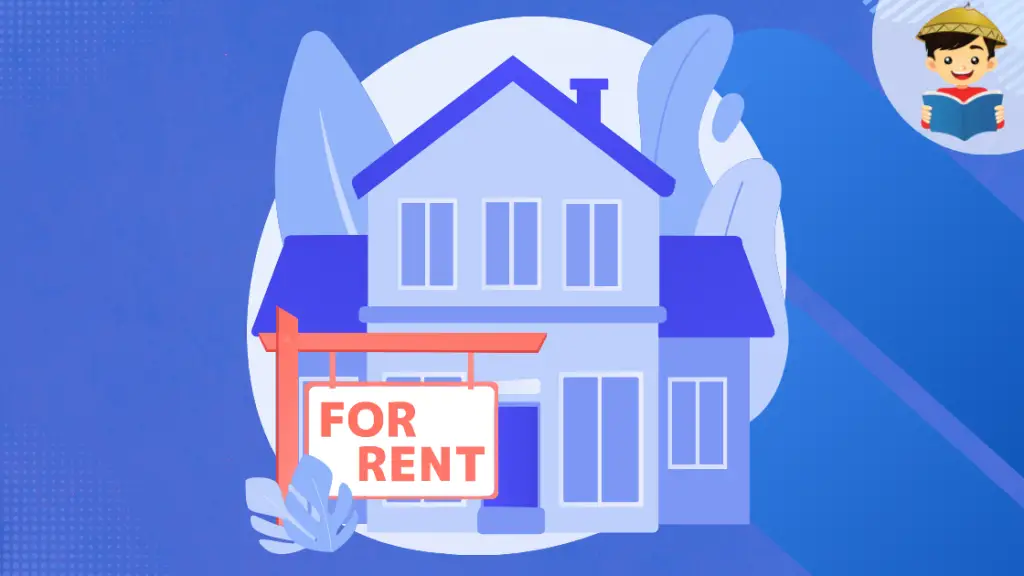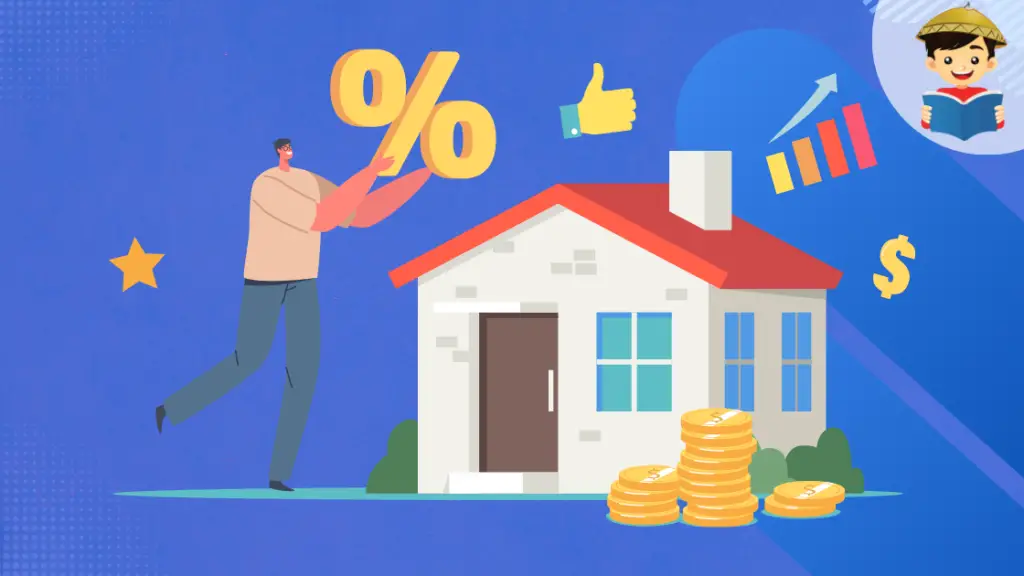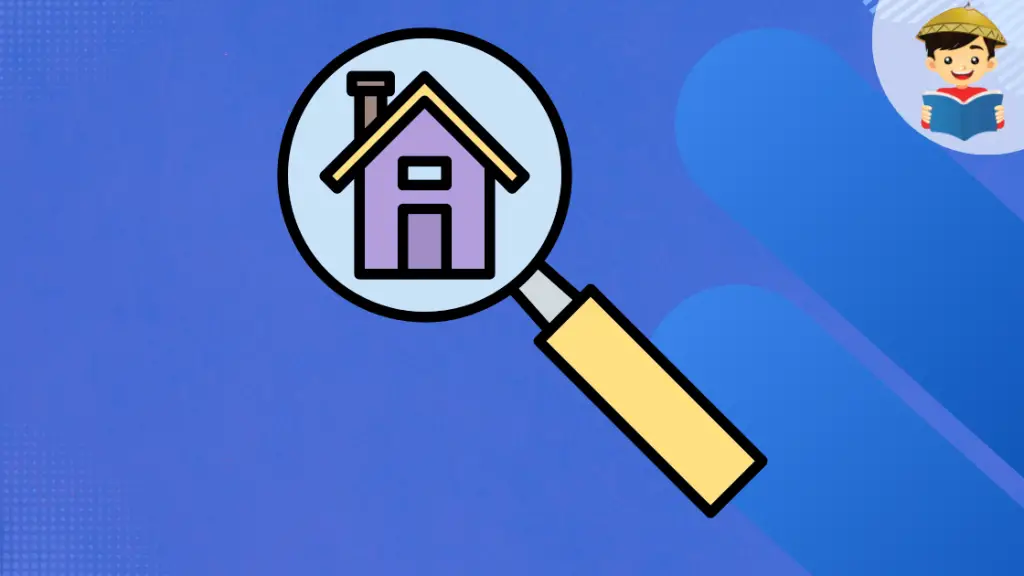How To Invest in Real Estate in The Philippines

The art of investing lies in having a good sense of where people are likely to meet their needs and wants. Especially in the Philippines, where the primary source of growth is the population1, knowing what the young population is likely to want next will be key to improving investment returns.
For this reason, learning to invest in real estate is a key tool in your arsenal as an investor because investing is about people, and the one thing people always want is housing.
DISCLAIMER: This article is for information purposes only. No portion of this work should be interpreted as an offer, solicitation, or recommendation to buy or sell the investment securities or vehicles referenced herein. No portion of this work should be interpreted as legal advice. The information in this article is as of the date of publication and may have changed following said date.
Table of Contents
- What Is Real Estate Investing?
- Ways To Profit From Real Estate Investments
- Types of Real Estate Investment
- Who Can Invest in Philippine Real Estate?
- How Much Is the Minimum Investment in Real Estate?
- Pros and Cons of Investing in Real Estate
- What To Consider When Investing in Real Estate
- How To Invest in Real Estate in the Philippines
- Tips & Warnings
- Frequently Asked Questions
- References
What Is Real Estate Investing?
Real estate investing is the purchase of real estate properties for the purpose of generating a profit. In other words, investing in real estate means purchasing property for purposes other than a primary residence.
Ways To Profit From Real Estate Investments
1. Capital Appreciation
This refers to the profit you generate when the value of your property increases (i.e., price appreciation). When the price of your property increases over time and you are able to sell it at a higher price, the difference between your original purchase price and the selling price constitutes the capital appreciation of your investment.
This profit, as a percentage of the original purchase price, is referred to as a capital gain. For example, if you purchased a condo for ₱2 million and were able to sell it for ₱2.5 million, your profit from the investment is ₱500,000 or 25% of your initial investment.
2. Recurring Income
While capital appreciation is the profit you generate when you sell your property, recurring income is the profit you generate while holding the property. Recurring income from real estate investments comes in the form of rental income.
Your rental yield is your total rental income as a percentage of your original purchase price. For example, if you purchased a condo for ₱2 million and rented it out for ₱4,000 per month, your annual rental income would amount to ₱48,000, translating to a rental yield of 2.4%.
In the examples above, the sum of your capital gain and rental yield constitutes your total return from the real estate investment. Most real estate investments can profit from capital appreciation and recurring income. For example, you can purchase a brand new condo and rent it out for ten years before you finally resell it at a higher price. In this case, your total profit would be the sum of your capital appreciation and rental income. However, in practice, real estate investors tend to focus their efforts on investing for either capital appreciation or recurring income because the discipline of holding a property for resale differs from that of holding it for leasing.
Types of Real Estate Investment
There are two types of real estate: residential and commercial.
Residential real estate is further categorized into house-and-lots, townhouses, and condominium properties.
In the same vein, commercial real estate is further categorized into offices, merchant space (e.g., mall space or kiosks), and industrial space (e.g., warehouses).
The real estate industry (developers, brokers, appraisers, etc.) think of the industry along these lines. But for investors, there is a subtle difference between the types of real estate and the types of real estate investments. It is helpful to categorize the real estate market according to the “business model” of the investment.
1. Resale Investments

Purchasing property to resell it at a higher price focuses on capital appreciation as the primary source of profit. In business-model terms, this is simply referred to as a buy-and-sell strategy. For buy-and-sell investors, two niches in the market are often of interest.
a. Pre-Selling Properties
Pre-selling properties are still under construction but are already up for sale. Local developers like Ayala Land or DMCI typically start selling their projects as early as 6 or 7 years before it’s ready for occupancy.
Investing in pre-selling properties for future resale entails purchasing these properties as soon as the pre-selling period opens. The advantage of this is that you get to enjoy attractive discounts and favorable payment terms that usually disappear as the project approaches completion. Thus, the upfront costs (and their corresponding hit to your liquidity) are lowest during the early stages of pre-selling. You can buy promising properties with little to no upfront investment, and the monthly installment can be quite light since it’s spread out over a longer period.
During that pre-selling period, the property’s price often appreciates as the project approaches completion and the value of the real estate in the area generally appreciates. Thus, investors in pre-selling properties often just “ride” the pre-selling period and transfer ownership of the property to an end-user near the end of the pre-selling period.
b. Pre-Owned Properties and Foreclosed Properties
Another way the buy-and-sell model can work is by looking at pre-owned properties. This entails hunting for properties likely selling below their actual value, either because they’re a “fixer-upper” or because they’ve been foreclosed–or both.
A foreclosed property is a specific type of pre-owned property that is up for sale because the previous owner could no longer pay the mortgage on that property. Because of this, the lending bank repossesses the property and puts it up for sale to recover the bank’s investment.
Foreclosed or not, buying and selling a pre-owned property requires a more active effort on the part of the investor. This is because the best bargains are properties in poor but recoverable conditions. Investors who find properties like this often “flip” the property–they renovate the property and redesign the interior to bring the property’s condition to a more attractive state. If done right, the increase in the property’s value can be greater than the cost of the flip.
The buy-and-sell strategy can come with big paydays if done right, but the disadvantage is the huge investment in time and, therefore, liquidity. Big as they are, it can take months or years to realize profits from the investment, and this is why some real estate investors prefer the leasing model.
2. Leasing Investments

The leasing strategy entails purchasing a property to rent it out. By buying property on financing (i.e., via a mortgage loan) and renting it out, the impact on your liquidity is less because you can use your rental income to offset mortgage payments. And when the mortgage becomes fully paid, the rental income from the property all goes to your pocket (after taxes).
There are three ways that this strategy can be implemented.
a. Short-Term Leasing
Short-term lessors cater to the market looking for stays ranging from a few days to a few months–often tourists or professionals in town for a short stay. These days, short-term leasing is synonymous with hosting an Airbnb, although it need not be. There was a market for short-term stays even before Airbnb (e.g., transient houses).
The advantage of short-term leasing is a lower risk of problem tenants (e.g., delinquent payments or poor housekeeping). The disadvantage is twofold: short-term leasing can require a more active effort from the lessor (for ongoing cleaning and maintenance), and it also runs a higher vacancy risk; in slow times, the property can go for weeks unoccupied.
b. Long-Term Leasing
Long-term lessors cater to the renter market, which comprises individuals or families working far away from their primary residence. This can also consist of young professionals who are starting to move away from “the nest” of their family homes. In any case, long-term rental agreements can span multiple years.
With long-term leasing, the advantages and disadvantages are reversed relative to short-term leasing: ongoing maintenance is usually occasional, and occupancy is more consistent. On the other hand, headaches can be constant if your tenant is problematic.
c. Commercial Leasing
Commercial leasing is often a long-term arrangement focusing on businesses rather than individuals. In commercial leasing, the payment terms can differ from residential renters because the rent can be quoted as a percentage of sales. Thus, a unique advantage of commercial leasing is the upside potential if the tenant’s business is going well. On the downside, commercial landlords may be forced to bear the brunt of difficult times, as was seen during the early half of COVID-19 lockdowns, where commercial rent payments were frozen.
3. Real Estate Investment Trusts (REITs)

REITs are the most convenient way to invest in real estate. REITs are a lot like stocks–they are actively traded in the stock exchange and represent company ownership. However, REITs are unique in that they specialize in owning rental properties. Moreover, REITs are legally required to pay out 90%2 of their profits to investors. Thus, owning a REIT is like owning a portfolio of up-and-running commercial properties.
Of course, the disadvantage of REITs is the volatility. Because they are actively traded, the risks and rewards of owning REITs are more akin to stock investing than real estate investing.
Who Can Invest in Philippine Real Estate?
Filipino citizens of legal age can generally start investing in real estate.
Foreigners cannot own land3 in the Philippines. They can invest in condominium developments as long as the ownership of the condominium corporation has not reached the 40% foreign ownership limit. Foreigners can also invest in single-detached homes as long as they do not own the land. Alternatively, foreigners can set up a corporation with 60% Filipino ownership and invest in real estate via that vehicle.
Minors cannot invest in real estate4 because minors cannot enter into legal contracts, and investing in real estate requires entering into various contracts.
How Much Is the Minimum Investment in Real Estate?
The minimum buy-in from a real estate investor depends on the property’s value. Banks and other financing institutions typically require a downpayment of 20% of the property’s value5 before offering to finance. Thus, for the property you are interested in, 20% of that property’s value will be paid for out of your pocket.
Pros and Cons of Investing in Real Estate
1. Why Invest in Real Estate?
a. Higher Average Returns
Real estate investment offers an opportunity to earn higher returns compared to common investments like bonds or stocks. Rental yields in the Philippines average around 6% per annum6, higher than the average yields on bonds (1.8%) and stocks (1.9%) ( Banco de Oro [BDO], 2022). This does not yet account for capital gains.
b. Less volatile asset
Unlike stocks, real estate properties are not listed on an exchange. Thus, while real estate prices fluctuate, their perceived volatility is much less than investments like stocks; real estate investors do not have to deal with the literal ups and downs in price that stock investors witness daily.
2. What Are the Risks?
a. Illiquidity
Investing is a pick-your-poison type of game. The poison of time depositors is meager yields, while the venom of stock investors is constant volatility. For real estate investors, that poison is illiquidity.
Real estate properties come with hefty price tags and can be difficult to resell quickly7. Thus, real estate investors can find themselves unable to access a huge chunk of their funds for emergencies because that money is tied up in a property that can take months to sell.
b. Property Damage
The potential for property damage is also a risk unique to real estate investing. Condos or single-detached houses could be damaged by accidental fires, earthquakes, floods, and man-made events. Stock and bond investors don’t have to worry about this because they don’t invest in physical assets. The standard way to mitigate this risk is via insurance.
What To Consider When Investing in Real Estate
1. Focus on a Specific Location
It’s often said that real estate is all about “location, location, location.” But what constitutes a good location depends on your goals as an investor. A “good location” possesses the following factors.
a. Growth Potential
Especially for buy-and-sell investors who are counting on price appreciation, good location means focusing on high-growth areas. Admittedly, deciphering which areas have high growth potential is not pure science; some keen sense is also required. However, some indicators can help this process:
i. Proximity to Congested Centers
In the Philippines, and at this time, high-growth areas can often be found in highly accessible city-fringes. Cities like Metro Manila and Metro Cebu are economical and commercial activity centers, but they do not have unlimited capacity to accommodate population growth. Thus, as the population grows but the centers of activity remain the same, demand for real estate often spreads to nearby areas.
For example, the Cavite-Laguna-Batangas (CALABA) area is often considered to have high growth potential because residential demand will likely flock there as Metro Manila becomes more congested.
ii. Proximity to Key Infrastructure Projects
The CALABA area also enjoys high growth potential because it is highly accessible to Metro Manila via a network of highways, including SLEX, the Skyway, CAVITEX, and CALAX. Bulacan is also touted as a benefactor of such projects because the construction of the MRT7 project is likely to improve access between Bulacan and Metro Manila.
b. Stable Occupancy
While buy-and-sell investors focus on growth potential, lessors focus more on stability. Because the primary goal of leasing is maintaining occupancy, lessors focus on properties where demand for residential or commercial space is likely to remain high.
For example, in Metro Manila, this means focusing on areas like Makati, BGC, and Ortigas, which, being central business districts (CBDs), are likely to attract high demand from office workers. Because they are commercial centers, demand for short-term stays is also expected to stay high.
c. Familiarity
This is the most important factor but the most underestimated among new investors. Above all, the best locations are the ones you are familiar with. It is easy to tout the growth potential of broad areas like Manila or Cebu, but this potential is not spread out evenly within those areas. Some locations are better than others, and some may not benefit from the broader area’s growth.
Professional real estate brokers know this well about familiarity, which is why they specialize in specific areas. A broker specializing in the New Manila area is unlikely to offer their services to sell a property in Pasay, even if both are within Metro Manila. There is an excellent reason that the industry works like this.
For example, investing in Makati seems like an easy call. However, non-locals may not know that although the CBD is an attractive area for investing, the areas just a few kilometers away from that area are flood-prone. Thus, the price for a property within the CBD can be very different from that of a property just outside it, even if they are just a few kilometers apart. This can also affect the time it takes for you to sell.
Another example is the Ortigas area. There are no clear demarcations for what constitutes the Ortigas CBD because the area is shared between Pasig and Mandaluyong (and Quezon City, to some extent). Thus, many investment opportunities may tout themselves as being “close” to the Ortigas CBD. An investor unfamiliar with the area may fall for this quickly, but those familiar with the area know that traffic flow (and heaviness) is very different east of C5 versus west of it. So two properties 5 kilometers apart could be 2-3 hours apart, depending on where they are situated within that normal traffic flow.
In real estate investing, intense research cannot take the place of familiarity, so you might be better off investing in an area with less growth potential but that you are very familiar with. Even if the region generally does not have much growth potential, there may be very promising pockets of opportunity within that area that only a local would know and, thus, capitalize on.
2. Enlist a Licensed Broker
It is not necessary to enlist a broker8 when selling a property. However, selling a property can be cumbersome, especially for new investors. Without a real estate broker, you will worry about due diligence, documentation, taxes, and negotiation all on your own.
Real estate brokers can help in navigating the process of legal documentation, and they can tap their network to shorten the time to sell. Real estate brokers often charge around 2-5% of the property’s value for their services.
3. Plan for Financing
Real estate investors rarely purchase a property with 100% cash (this is called a spot cash arrangement). Instead, they typically finance most of the investment with borrowed funds. This is a way to lessen the burden on your liquidity. This is also a way to drastically improve returns (albeit with higher risk) using the principles of leveraged investing9.
Thus, securing financing will be an integral part of your real estate investing journey, so it helps to be familiar with financing jargon and processes.
a. Downpayment
The downpayment is the portion of the property value you cannot borrow. That is, it will have to come out of your pocket. This is typically 20% (Security Bank, 2018) of the property’s value at a minimum, but you can opt to shell out more so you don’t have to borrow as much. The portion of the property’s value you shouldered is called your equity in the property.
You can pay for the downpayment in one go; this is called a spot downpayment arrangement. However, just because you have to shoulder the downpayment out-of-pocket does not mean you have to pay for it in a lump sum. For example, if you purchase a property during its pre-selling period, the 20% downpayment can be paid off in monthly installments spanning a few years. Once the property is complete, and your downpayment has been fully paid, you can secure bank financing to pay off the rest of the property’s value.
b. Upfront Fees
These fees include processing fees and taxes that must be paid upfront once your loan is approved. Some of these fees are quoted at a fixed price roughly ranging between ₱8,000 – ₱15,000, depending on the bank. The largest component of the upfront fee is usually the documentary stamp tax, which is 1.5% of the property value.
c. Amortization Schedule
The payment schedule for a mortgage loan is often laid out in fixed monthly payments. Depending on the bank or financing institution, this can also be arranged in terms of a fixed monthly amortization and a lump sum payable at the end of the loan. However, this arrangement is often reserved for commercial or industrial properties.
Aside from the property’s value, three key factors affect how the amortization schedule will look like:
i. Loan Term
This is also referred to as the loan’s tenor/tenure or maturity. A longer-term will lead to a lower monthly amortization, all else equal.
ii. Interest Rate
The interest rate is the price you pay for the bank’s service. In this case, the bank’s “service” involves letting go of some of their liquidity so you can retain yours. A lower quoted interest rate will lead to a lower monthly amortization, all else equal.
iii. Repricing Period
The repricing period is how often the interest rate on the loan changes. Of course, as the interest rate changes, the monthly amortization also changes. Depending on the bank or financing institution, the interest can be repriced annually, every three years, every five years, and so on. The repricing terms are often negotiated between you and the bank, but this will ultimately depend on your appetite.
A yearly repricing will lead to a lower initial interest rate, all else equal, but it will also give you greater uncertainty. If market interest rates increase a year from now, your monthly amortization will also increase. This is called interest rate risk.
Conversely, a longer repricing period makes your monthly costs more predictable, but you will also give up any chance to save on costs in case market interest rates decline. It also often leads to a higher starting interest rate because, in this case, the bank is absorbing the interest rate risk for you.
d. Collateral
The bank or financing institution often asks for proof that you own or are expecting to own the property you are borrowing for. The specific documentary requirements depend on the bank, but this can be in the form of the property title, a deed of sale, or a contract to sell. Collateral serves as protection for the bank in case you fail to repay your debt.
Even if you own the property, when it is mortgaged, the bank has the right to take possession of it if you default on the loan.
How To Invest in Real Estate in the Philippines
1. Select the Desired Property

The first step is going shopping. For real estate investors, this is usually a two-step process.
a. Initial search
There are many ways to go about your initial search. If you already know a broker or two, you can ask them for any properties they have for sale. If you are interested in a particular developer, you can check out their website and see what projects they have under development for the area you are interested in.
If you are more interested in an area than a developer, you can rely on property listing services like Lamudi or DotProperty. Alternatively, you can consult the banks’ websites to check out the foreclosed properties they have for sale. The link to this is often found at the bottom of the bank’s home page, under “Properties for sale.” Banks like BDO10 and Security Bank11 maintain these pages regularly. (They also have one for repossessed cars.)
b. “Trippings”
In local real estate parlance, the ocular inspection is often called a “tripping.” The ocular inspection is important because it is part of your due diligence. If you plan to rent out or sell the property, you need to know if the property comes with any damages or problems and whether those problems are fixable or beyond repair. Otherwise, you will not be able to do anything with the property, so you could lose 100% of your investment.
You can conduct multiple inspections of a property. The first inspection could simply be to see and get a feel for the property and the location. This is typically where you assess the quality of the location and whether it is accessible–basically determining whether you can sell this later on, either to buyers or renters. You can also confirm through the first inspection if the property has any illegal occupants.
For the second and subsequent inspections, you can conduct the inspection in the company of professionals like foremen, contractors, or utility experts to better assess any damage and the cost of repair and renovation.
In no way does an ocular inspection represent a commitment to purchase the property. Real estate investments are a huge financial commitment, so don’t be afraid to be thorough with the inspections. Keep in mind, however, that other interested buyers might beat you to the punch if you’re too slow to make an offer.
2. Conduct Due Diligence

The due diligence process is important because this is where you can ensure that you will be able to do what you plan to do with the property without any legal roadblocks.
The below due diligence steps only apply if you are purchasing pre-owned or foreclosed properties. For pre-selling properties, there is no due diligence to conduct because the property is not yet complete. Thus, your due diligence will be limited to the developer and its track record and reliability.
Step 1: Verify Documentation
Before purchasing the property from a seller, you must confirm that the property is indeed unconditionally owned by the seller. You can verify this by asking the seller for a copy of the property’s title and tax declaration. If you are purchasing a foreclosed property, you can request these documents from the bank.
You can also request a certified true copy of the land title from the Registry of Deeds of the city/municipality where the property is located.
Aside from confirming ownership, the title is important because it can be annotated with details that tell you whether the property will be a problem after purchasing it. For example, if the property is the subject of an ongoing court case, this will be annotated in the title.
If a title comes with attachments such as the one above, the time and effort required from you to eventually re-sell the property legally could be immense and not worth the investment. This due diligence step is important because it empowers you to decide if you have the appetite, competence, and resources to deal with a problem property.
Step 2: Check for an Encumbrance on the Property
The title can also contain information on whether the property comes with an encumbrance like a mortgage or if someone has put a hold on that property. If so, that means that your ownership of the property will be conditional on that encumbrance. Especially for starting investors, it is best to focus on unencumbered properties.
Step 3: Check for Unsettled Dues on the Property
Ongoing dues commonly associated with real property ownership include property taxes (RPT), utility bills, and homeowners’ dues.
For RPT, you must double-check if there are unpaid dues on the property because you will be liable for those unpaid dues once you take ownership of the property. You can check this by requesting a statement of account (SOA) for the property from the City Treasurer’s Office. The same process applies to utility bills, except that you request the SOA from the service providers.
Homeowners’ dues usually apply to properties or condominiums that are situated within a subdivision with a homeowners’ association or a condominium development with a condominium corporation. Requesting SOA for the property can be done by visiting the admin offices of the HOA or the condominium corp.
In conducting the due diligence steps above, ensure you have an authorization letter from the property owner or bank in case of foreclosed properties.
The due diligence process may seem intimidating, but the cost of ignoring these steps can be very large, if not 100% of your entire investment. Since you will revisit these government offices anyway when you finalize the sale, visiting them as early as the due diligence stage is good practice.
3. Purchase the Property

The steps of purchasing a property can differ depending on whether you are buying a property in its pre-selling stage, whether it’s simply pre-owned or a foreclosed property. Nevertheless, the process of purchasing a property generally follows the following essential steps:
Step 1: Negotiate Terms
At this stage, you will iron out how much you have to pay and how you will pay it. During the negotiation stage, you will communicate mainly with two parties:
a. The Seller
This communication will typically occur through your broker unless it is a direct sale (i.e., you transact directly with the property owner). You will iron out the final purchase price of the property, along with any discounts the seller may offer.
You will also iron out the payment terms for the purchase. If the buyer is amenable to an installment scheme where you pay your downpayment throughout a period of time, such an agreement will be settled at this stage.
In the case of foreclosed properties, the bank is the seller, and the “negotiation” of the purchase price happens via an auction.
b. The Bank or Financing Institution
This communication will occur mainly with your relationship manager or any bank officer assigned to handle your loan application. At this stage, you will finalize with the bank the size of your downpayment, the term of the loan and the amortization schedule, the repricing period, and the applicable interest rate.
In the case of foreclosed properties, getting financing from the same bank that is selling the property is not necessary.
In practice, the negotiation stage often comes as a back-and-forth that can span a few weeks to a few months. The exception is if you are purchasing a pre-selling property. In this case, you will only communicate with the developer (the seller) through their representative (the agent or salesperson). You will also only iron out the payment terms of the downpayment.
Because the property is pre-selling, it does not have to be paid in full immediately. Thus, the terms for bank financing will only be ironed out much later, when the project is near completion. For now, you only need to iron out the payment terms of the 20% downpayment and whether you want to pay that off in full immediately (a spot downpayment arrangement) or throughout the pre-selling period (an installment scheme).
Step 2: Document the Purchase
Once the terms of the sale are finalized between you, the seller, and the bank, these agreements will be put in writing.
The sale will be documented through a Deed of Sale for pre-owned and foreclosed properties. If you and the seller agreed to an installment sale, the agreement will first be documented through a Deed of Conditional Sale.
For pre-selling properties, since the property is not yet constructed, you will be issued a document called a Contract to Sell, which is equivalent to a Deed of Sale for pre-selling properties. That is, the developer has an obligation to sell the property to you once completed.
Step 3: Pay Taxes and Fees
As the buyer, the standard fees12 you will shoulder include the Documentary Stamp Tax (1.5% of the property value), the Transfer Tax (0.5%, or 0.75% for Metro Manila properties), and registration fees with the Registry of Deeds of the LGU where the property is located. The seller usually shoulders the Capital Gains Tax and the Broker’s Fees, although this can differ depending on your agreement with the seller during the negotiation stage.
Step 4: Close the Purchase
Finally, to finalize the transfer of ownership13, you as the buyer must ensure that the property title and its tax declaration are updated in your name. You can do this by visiting the Registry of Deeds and the Local Assessor’s Office in the LGU where the property is located.
4. Hold the Property

a. Holding Properties for Resale
For pre-selling properties, this simply involves waiting for the pre-selling period to lapse while you’re paying off the downpayment according to the initially agreed-upon schedule. As the project nears completion, you can start looking for buyers with the help of your broker.
For pre-owned or foreclosed properties, holding a property entails doing the repairs and renovations you had planned when you first inspected the property. This entails hiring contractors and experts to implement your desired improvements on the property.
b. Holding Properties for Leasing
For long-term and short-term rental properties, the first step to holding the property is to bring it to a habitable condition. This involves ensuring that all utilities operate smoothly and the property’s interior is clean for long-term rental properties.
For short-term rental properties, an additional step may involve working on the interior design of the space, so potential guests are enticed to select your property for a short stay.
Some lessors opt to hire property managers, but this is unnecessary and only makes sense for larger portfolios like low-rise apartment buildings.
5. Re-sell the Property

When re-selling, the buying process discussed above is simply mirrored.
a. Negotiation
In this stage, you agree with your buyer regarding the payment terms of the sale. If the property is still mortgaged, you notify your bank of your intention to sell the property so they can prepare to re-assign the loan to the buyer.
b. Documentation
The sale will be documented through a Deed of Assignment if you are re-selling a pre-selling property. As mentioned, the property is not yet complete, so there is no title yet. Instead, what happens is that the Contract to Sell that you have with the developer will be re-assigned to your buyer. Therefore, once the project is completed and ready for occupancy, the developer will sell the property to your buyer.
For pre-owned properties, the sale between you and your buyer will be effected through the Deed of Sale. If the property is still mortgaged, this document will be in the form of a Deed of Sale with Assumption of Mortgage. This is why you must coordinate with your bank during the negotiation phase. The bank must sign off on the documents because it has a conditional claim on the property.
c. Payment of Taxes and Fees
As the seller, you are typically liable to pay the Capital Gains Tax (6% of the property value) and any unpaid dues on the property (e.g., RPT, utilities, condo dues, etc.), and the broker’s commission. However, as before, you and your buyer can agree on which party shoulders which costs.
d. Closing the Purchase
The buyer usually handles the clean-up at the end because it is in their interest that the sale and transfer of ownership are properly documented. However, you must ensure this on your end as well.
For pre-selling properties, if you do not have a copy of the Deed of Assignment and the re-assignment is called to question later by the developer, you may be liable to pay for the property once it is ready for occupancy.
For pre-owned properties, if the property becomes subject to a court case, you may be tied up in a court case in which you had no involvement.
Tips & Warnings
1. Avoid Occupied Properties
Properties with illegal occupants make for tricky business. This is often a problem with foreclosed properties or land that has been idle for a long time. Even large and well-known landlords have difficulty with them14 because illegal occupants, having established some territoriality over the property, can be hostile in evictions. It is also a politically complicated issue, so evictions are not just a matter of law enforcement. Purchasing properties with illegal occupants can render the investment unusable or unsaleable.
2. Choose Between a Spot or Installment Arrangement
The disadvantage of a spot arrangement is the big hit on your liquidity because of such a large upfront payment. However, on the flip side, sellers often encourage spot arrangements with large discounts. How do you compare which is more advantageous?
The choice often boils down to your appetite and liquidity needs, but a professional would decide by comparison. If you had the money to pay the spot, how much could you earn if you opted for the installment arrangement and just invested the idle money passively in the meantime? Is that passive yield greater than the savings from the discount? If so, go with the installment arrangement. If not, go with the spot arrangement and avail of the discount.
3. Invest in Change
The key to successful investing is identifying mispricing, which occurs when the price of an asset does not adequately reflect its future value. This is why investors pay attention to “catalysts”–factors that are likely to change an investment’s value. In real estate, the best way to hunt for such catalysts is to monitor potential changes in traffic flow brought about by key infrastructure projects.
At its core, infrastructure projects change the flow of people. Undoubtedly, infrastructure projects improve access–but from where and to where? In addition, these infrastructure projects will likely move traffic away from certain areas, which is also important to note.
For example, the completion of the TPLEX shortened travel time from Manila to Baguio by about two hours. The downside is that it diverted traffic away from the city roads of Tarlac and Pangasinan, previously regarded as “corridors of growth.” Thus, monitoring infrastructure projects entails deciphering where opportunity is likely to appear and where it is likely to disappear.
The government keeps a page about its infrastructure projects15, but this can change with the changing administrations. It also helps to monitor the initiatives of private corporations that are active in infrastructure, like San Miguel Corporation16 and Metro Pacific Investments17.
A noteworthy trend in recent infrastructure is the apparent move to open up access to areas north of Manila. The MRT7 and the NALEX18 projects are indications of this. Thus, the Central Luzon region might eventually follow the growth trajectory enjoyed by the CALABA area.
Interesting as it may be to ruminate on the future of infrastructure, it is good advice to remember the risk. Not all infrastructure projects live up to their promises, especially as the priorities of the National Government change.
4. Learn About the Maceda Law
The Maceda Law is a protection afforded to buyers of properties under a Contract to Sell arrangement. Thus, it is most beneficial to buyers of pre-selling properties who are in financial distress.
The Maceda Law states that buyers who default on their monthly installments are entitled to receive about half of the amount they’ve already paid if they have been paying for at least two years.
Thus, for real estate investors focused on pre-selling properties, this provides additional protection in case your financial situation drastically changes while you’re still in the pre-selling period. Unfortunately, the Maceda Law does not apply to mortgage loans.
Frequently Asked Questions
1. Are real estate investments taxable?
Yes. For resales, sellers are required to pay the capital gains tax, while buyers must pay the documentary stamp tax and the transfer taxes.
The rental income from a property is considered taxable and subject to income tax for rental properties.
References
- Mendoza, R. (2022). PH ready for demographic ‘dividend’ – expert. Retrieved 13 July 2022, from https://www.manilatimes.net/2022/04/24/news/national/ph-ready-for-demographic-dividend-expert/1841063
- Stock vs. Real Estate. Retrieved 13 July 2022, from https://www.bdo.com.ph/securities/reits-stocks-versus-real-estate
- Land Ownership and Property Acquisition in the Philippines for Foreigners and Former Filipino Citizens. Retrieved 13 July 2022, from https://kittelsoncarpo.com/property-ownership/
- Age Requirements as found in the Provisions of the Civil Laws of the Philippines in Entering into Various Contracts. Retrieved 13 July 2022, from https://www.alburolaw.com/age-requirements-as-found-in-the-provisions-of-the-civil-laws-of-the-philippines-in-entering-into-various-contracts
- A First-Time Homebuyer’s Guide. (2018). Retrieved 13 July 2022, from https://www.securitybank.com/blog/a-first-time-home-buyers-guide/#:~:text=Most%20local%20banks%20require%2020,pay%20on%20your%20own%20term.
- Rental Yields in Philippines compared to Asia. Retrieved 13 July 2022, from https://www.globalpropertyguide.com/Asia/Philippines/rent-yields#rent-yields-notes
- Flores, N. (2018). Busting the Myth About Reselling Used Condo Properties in Philippines. Retrieved 13 July 2022, from https://philpropertyexpert.com/busting-myth-reselling-used-condo-properties-philippines/
- Q&A: Can I Sell My Property Without Hiring a Broker? | Lamudi. (2016). Retrieved 13 July 2022, from https://www.lamudi.com.ph/journal/qa-can-i-sell-my-property-without-hiring-a-broker/
- How to Use Leverage for Your Next Real Estate Investment. Retrieved 13 July 2022, from https://www.limaone.com/how-to-calculate-leverage/
- Properties for Sale. Retrieved 13 July 2022, from https://www.bdo.com.ph/properties-for-sale
- Foreclosed Properties for Sale. Retrieved 13 July 2022, from https://www.securitybank.com/personal/loans/repossessed-assets/properties-for-sale/
- Sto. Tomas, D. (2020). Real-Estate 101: The cost of transferring a land title in the Philippines. Retrieved 13 July 2022, from https://philrep.com.ph/real-estate-101-the-cost-of-transferring-a-land-title-in-the-philippines/
- Closing of Real Estate Sale Transactions and Transfer of Title. (2021). Retrieved 13 July 2022, from https://www.arceotandoc.com/single-post/closing-of-real-estate-sale-transactions-and-transfer-of-title
- Recio, R., Legacy, C., & Dovey, K. (2020). ‘Forced’ evictions eat away at a Manila community as developer spares the golf course next door. Retrieved 13 July 2022, from https://theconversation.com/forced-evictions-eat-away-at-a-manila-community-as-developer-spares-the-golf-course-next-door-138297
- Government Projects. Retrieved 13 July 2022, from https://www.gov.ph/project-list.html
- Infrastructure. Retrieved 13 July 2022, from https://www.sanmiguel.com.ph/page/infrastructure
- Light Rail. Retrieved 13 July 2022, from https://www.mpic.com.ph/investor-relations/investments/light-rail/
- Grecia, L. (2022). TRB approves expressway linking Skyway Stage 3 to Bulacan airport. Retrieved 13 July 2022, from https://www.topgear.com.ph/news/motoring-news/northern-access-link-expressway-trb-approval-a4354-20220623
Written by Garie Ouano, CFA
Garie Ouano, CFA
Garie Ouano is an investment professional with 8+ years of research experience covering local and international equities and bonds. He has also been a CFA® charterholder since 2018. As an advocate for financial literacy, he regularly volunteers for the CFA Society Philippines. He has recently shifted from research to corporate finance and is doing work for a leading logistics company. In his spare time, he is preoccupied with Pinoy food, the horror genre, and cats. For inquiries, you may reach him via email ([email protected]).
Copyright Notice
All materials contained on this site are protected by the Republic of the Philippines copyright law and may not be reproduced, distributed, transmitted, displayed, published, or broadcast without the prior written permission of filipiknow.net or in the case of third party materials, the owner of that content. You may not alter or remove any trademark, copyright, or other notice from copies of the content. Be warned that we have already reported and helped terminate several websites and YouTube channels for blatantly stealing our content. If you wish to use filipiknow.net content for commercial purposes, such as for content syndication, etc., please contact us at legal(at)filipiknow(dot)net
